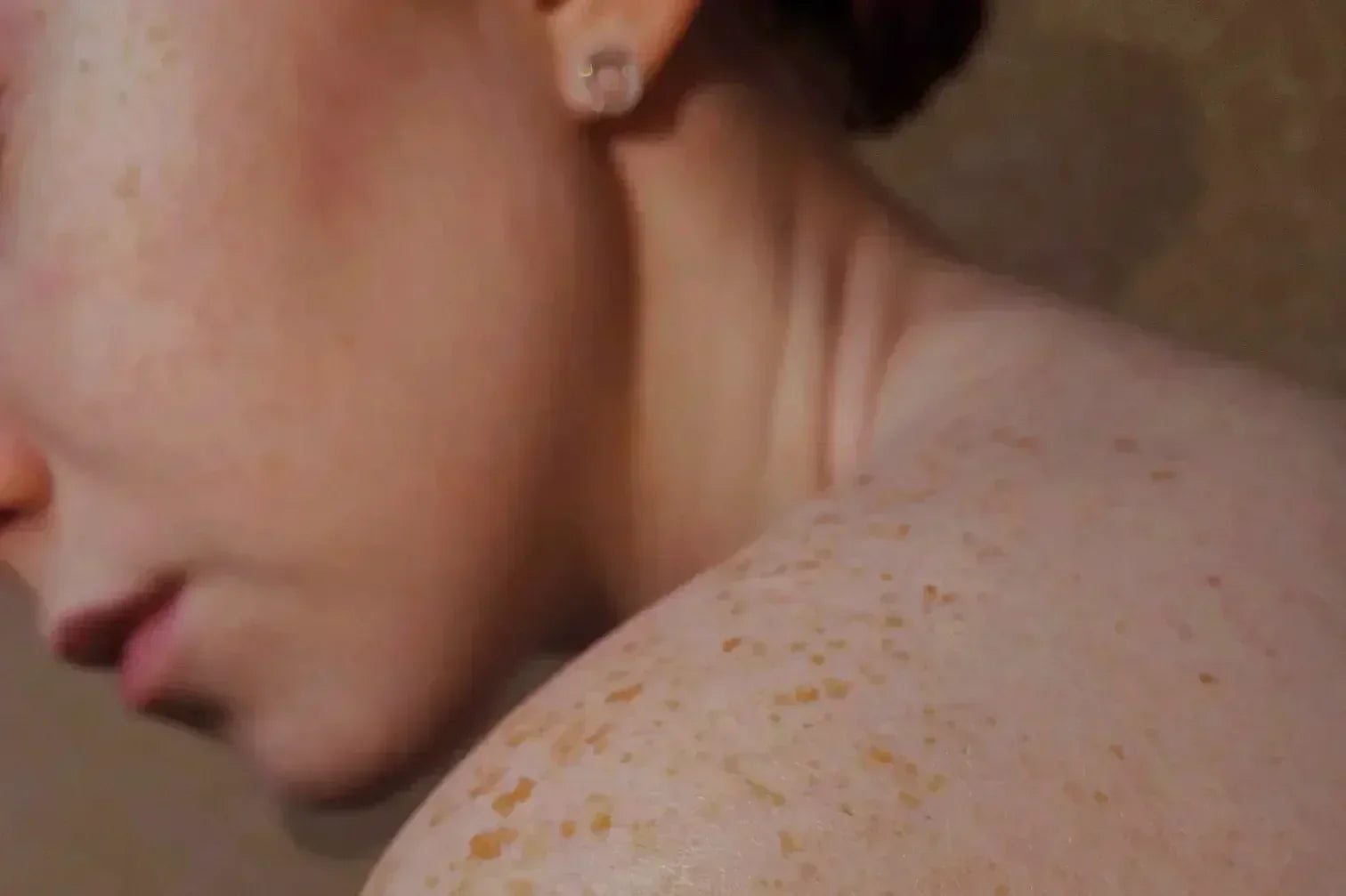Different Types of Ultraviolet Light and Their Effects on Skin
UVA Light
- Premature Aging: UVA rays are a significant contributor to premature skin aging as they lead to collagen degradation and increased senescence, causing wrinkles, fine lines, and a loss of skin elasticity.1
- Breakdown of Collagen & Elastin: UVA rays increase the level of Reactive Oxygen Species (ROSs) in the skin, which can damage the skin's collagen and elastin fibers in the dermis. Collagen and Elastin are crucial for maintaining the structure of the skin, therefore their depletion can lead to sagging and dull complexion .1
- Skin Cancer: Although UVA rays are less likely to cause direct DNA damage, they can contribute to the development of skin cancer over time.1
UVB Light
- Sunburn: UVB rays are the primary cause of sunburn – damaging the outermost layer of the skin (the epidermis), and leading to redness, pain, and peeling known as sunburn.4
-
DNA Damage: UVB radiation can cause direct damage to the DNA in skin cells, increasing the risk of skin cancer.3
-
Skin Pigmentation: UVB exposure can lead to an increase in skin pigmentation by triggering melanin production, causing freckles and dark spots .5
UVC Light
How to Protect Skin from UV Light
- Sunscreen: Use a broad-spectrum sunscreen with a minimum SPF of 30 to protect against both UVA and UVB rays. Apply it generously to all exposed skin, including your face, neck, arms, and legs. You should then reapply every two hours when outdoors.
-
Protective Clothing: Wear long-sleeved shirts, wide-brimmed hats, and sunglasses, and use UV ray-protective umbrellas to shield your skin and eyes from ultraviolet radiation.
-
Seek Shade: When the sun is at its strongest, usually between 10 a.m. and 4 p.m., seek shade whenever and wherever possible.
-
Avoid Tanning Beds: Tanning beds emit concentrated UV radiation and should be avoided.
-
Regular Skin Checks: Perform regular skin self-examinations to check for any changes, moles, or unusual growths. You should also consult a dermatologist if you have any concerns.
How to Find Sunscreen that Protects from UVA and UVB Rays
- Broad Spectrum - A sunscreen labeled as "broad spectrum" is formulated to protect against both UVA and UVB rays. This label informs you that, at the very least, it provides protection against UVA and UVB rays.
-
SPF Rating - The Sun Protection Factor (SPF) rating primarily indicates a sunscreen's effectiveness against UVB or “burning” rays – the higher the SPF, the greater the protection against UVB. However, it's essential to remember that SPF is only a measurement of how protective the sunscreen is against UVB, not UVA or UVC. For optimal UVB protection, look for broad-spectrum sunscreens with an SPF of at least 30 & reapply when necessary.
-
PA+ and PPD System - Some countries, particularly in Asia, use the PA+ system, which also indicates the level of protection against UVA rays. The more plus signs (+), the higher the UVA protection. Furthermore in Europe, the Persistent Pigment Darkening (PPD) system also measures UVA protection, with higher numbers indicating stronger UVA defense. By choosing sunscreens with high SPF and PA+ ratings or PPD values, you ensure adequate coverage for both UVA and UVB rays.
How OneSkin Can Help Protect Your Skin from UV Damage
- UV radiation is categorized into 3 different types, UVA, UVB and UVC, each with their own unique effects on skin.
- UVA are the rays most commonly attributed to causing premature aging.
- UVB is the main reason for sunburn, skin cancer and hyperpigmentation.
- UVC is generally not a concern as it does not reach the Earth’s surface. Despite that, it can still be encountered in medical or industrial settings.
- The best methods for sun protection are those that factor in shade or covering of the skin.
- Zinc oxide-based sunscreen has several benefits when compared to titanium oxide-based sunscreens such as a greater protection against UVA and UVB rays.
- Zonari, A., et al. Senotherapeutic peptide treatment reduces biological age and senescence burden in human skin models. Npj Aging, 9(1), 1-15. 2023.




